During my years in the field, I had recorded numerous instances of micro-movements in spider abdomens. Most are just really tiny unnoticeable movements around the spider’s heart line, but one particular spider stood out with swirling or pulsating movements in the abdomen and clearly visible with the naked eye. The amount of detail revealed got more fascinating as I got closer, showing a largely transparent but patterned membrane over what appeared to be the spider’s internal organs at work.
I have put together a short video to present the pulsation up close. I held the blade of grass in place with a clip and filmed it on a tripod using a Nikon D800, Tamron 90mm, Raynox DCR-250, Raynox MSN-202 as well as some LED lights to illuminate the scene. Please view in HD for the best experience.
The interesting question is… why does it exhibit such a phenomenon? Is there a purpose designed by nature for such a visual feast? After years of infrequent and casual discussions with local arachnologists Joseph Koh and David Court, as well as some random discussions with other arachnophiles on Facebook, I’ve consolidated a short list of hypotheses in an attempt to explain this behavior. Please let me know via the comments section if you have other suggestions or know of studies that could explain this behavior.
- Movement to attract prey
- Warning for potential predators
- Simply the movement of digestive fluids, we’re thinking too much (i.e. no special reason)
As this video is being shared around, more speculations are coming in so here’s a quick consolidation of additional ideas from the public. (Updated 13 Nov 2016)
- Mimicry of a snake head
- Mimicry of a mantis head
- Mimicry of a gecko head
- Mimicry of other insect larva to attract parasitoids
Here are some other still shots of this spider. It is not uncommon, and many others have photographed it before but few have documented the abdominal fluid pulsation.
Bird dropping spider (Cyrtarachne sp.)
There are some colour variants of this species, ranging from white to yellow.
Bird dropping spider (Cyrtarachne sp.)
The exact ID of this spider has yet to be agreed on by arachnologists in the region. It was originally thought to be Cyrtarachne bufo, where bufo means toad in latin and it was thought that the spider mimicked a toad (see photo above). A couple of years ago, this spider was documented as Cyrtarachne fangchengensis in the Singapore Biodiversity book. In a more recent discussion, based on examination of Thorell’s collection in London, C. fangchengensis is quite likely to be a junior synonym of C. inaequalis. As all this is still uncertain, all my Cyrtarachne photos do not have any indication of species.
Bird dropping spider (Cyrtarachne sp.)
The conical shoulder on the spider’s abdomen was originally thought to mimick a toad’s eyes, but some thought that the mimicry was a bit of a stretch.
Bird dropping spider (Cyrtarachne sp.)
A very old attempt to capture the swirling movement within the abdomen.
Bird dropping spider (Cyrtarachne sp.)
Dorsal view of another specimen with a simple animation.
Bird dropping spider (Cyrtarachne sp.)
Fast forward 3 years, and here’s my latest attempt with a yellow specimen found in the soon-to-be-developed Tengah Estate.
Bird dropping spider (Cyrtarachne sp.)
Posterior view for that “toad” look. Gave me the impression of a snake’s head though!
Bird dropping spider (Cyrtarachne sp.)
Typical scene of the adult female with its huge, round egg sac. The abdomen looked obvious deflated after laying the eggs!
Bird dropping spider (Cyrtarachne sp.)
Cyrtarachne builds a horizontal orb web with loosely spaced spiral threads. The spiral threads are thicker and stickier than that of other orb weavers.Bird dropping spider (Cyrtarachne sp.)
The male Cyrtarachne is a great example of sexual dimorphism. It is several times smaller than the female.
Bird dropping spider (Cyrtarachne sp.)
Another male of darker colour.
Bird dropping spider (Cyrtarachne sp.)
The female shown here is a juvenile but still a little larger than the adult male.
Bird dropping spider (Cyrtarachne sp.)
There are at least 2 species of Cyrtarachne in Singapore. This species is more uncommon, and most likely C. nagasakiensis. Their habitats appear to be the same for both species, as I had encountered both species just a few meters apart. However, this species does not exhibit the same abdominal fluid movement as seen in the main video.
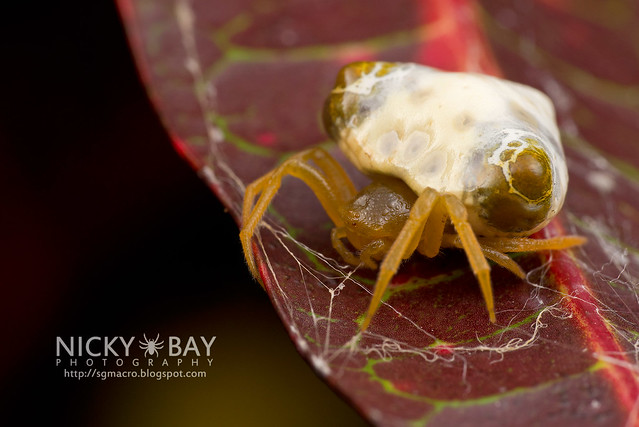




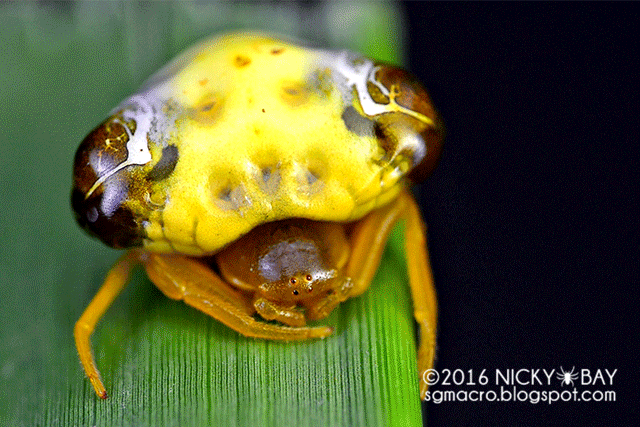
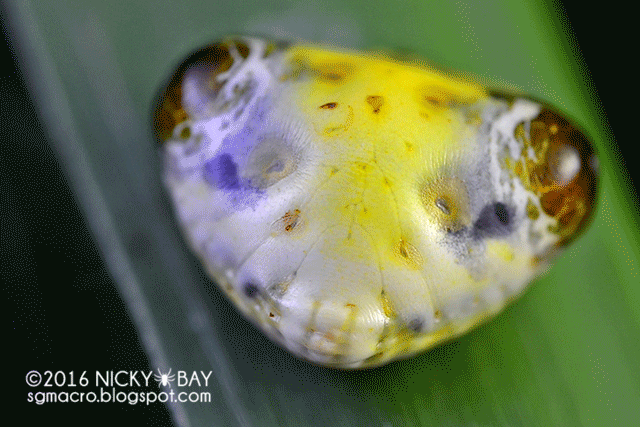
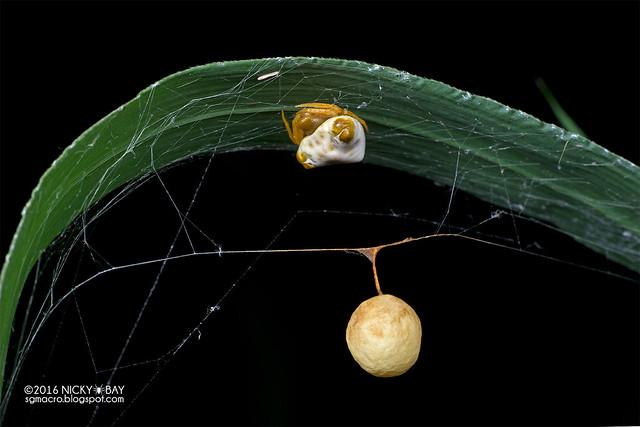
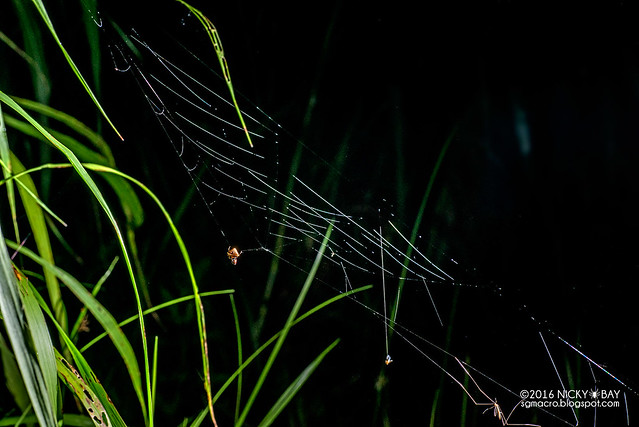




Conclusion
As this spider has been poorly studied, I hope that this article will trigger some solid research attempts to answer the questions that I have posed here. If you know of studies on this topic, do let me know via the comments below!



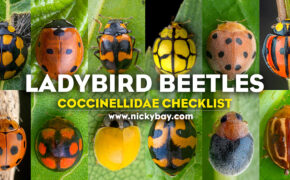
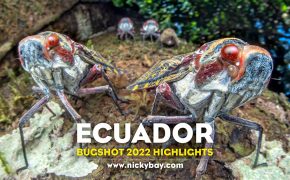
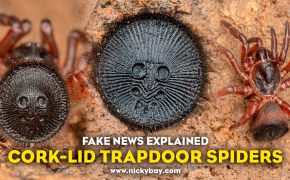
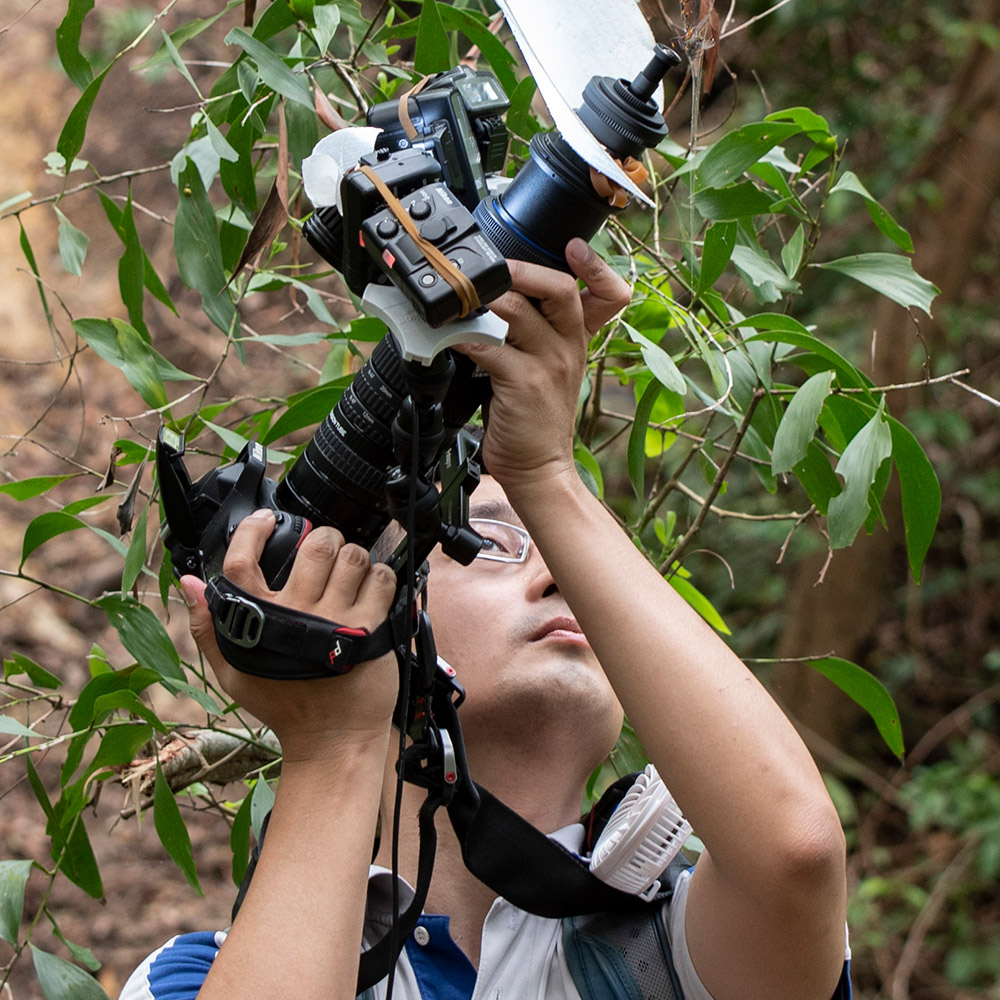










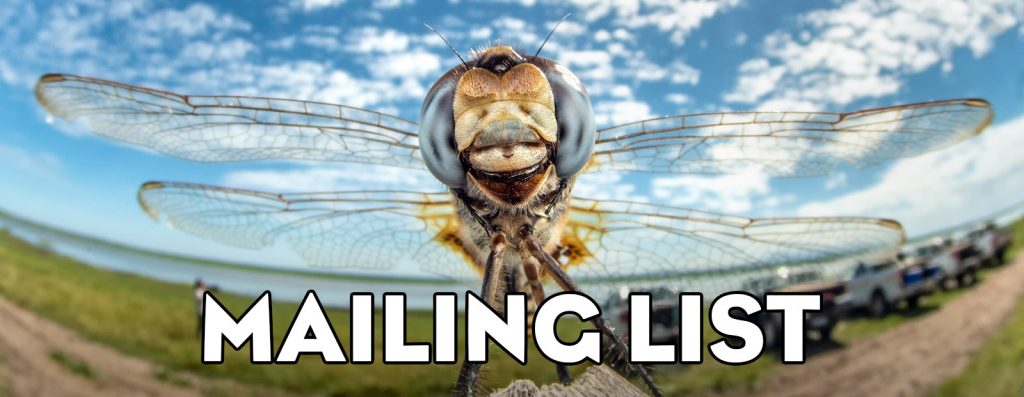
Lori Yang
I taped a weird bug found on car. It was tiny kinda square shaped. It literally spun around like one of those spin top toys. Wasnt sure if it was vibrating or spinning until I played video back. That insect was really wierd. I was hoping this was it when I saw title. The I saw spin so fast it was only a blur on a pic. It was beige (color less) wish I knew what it was